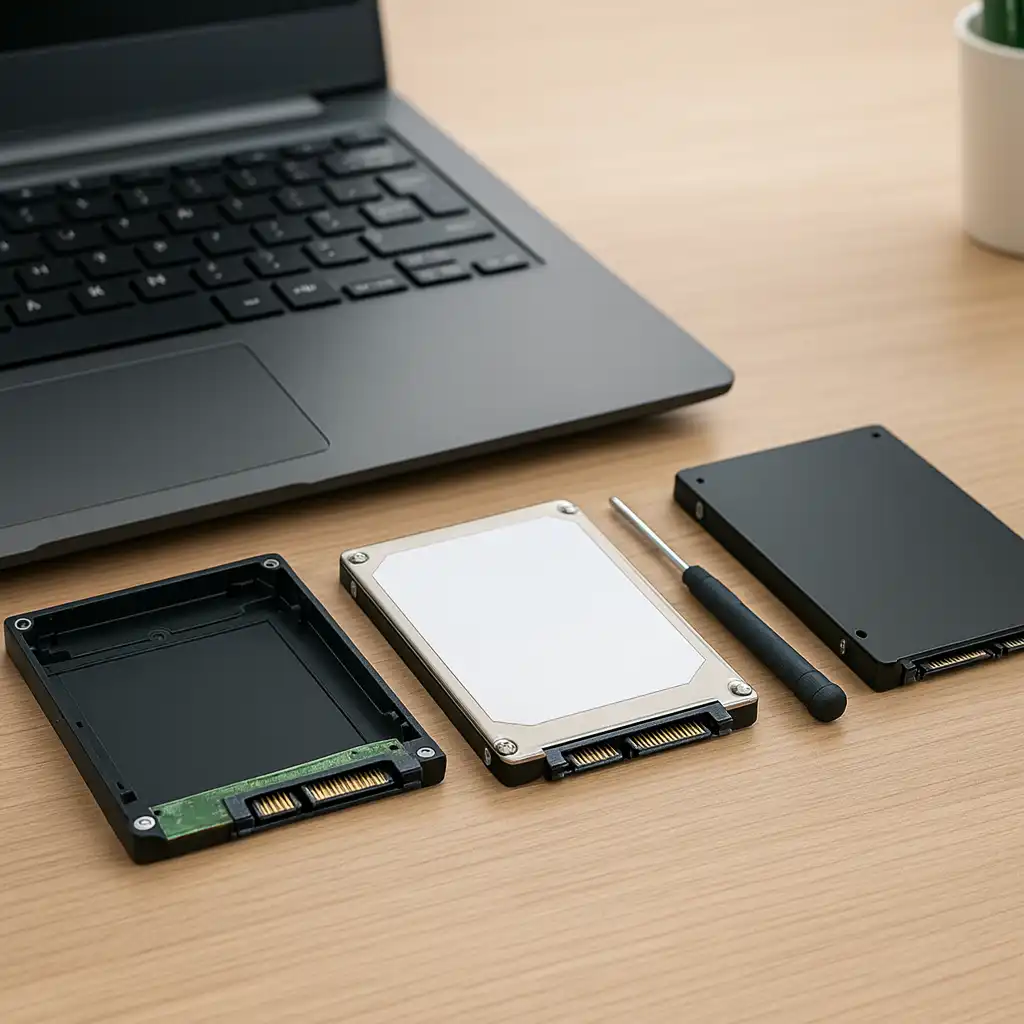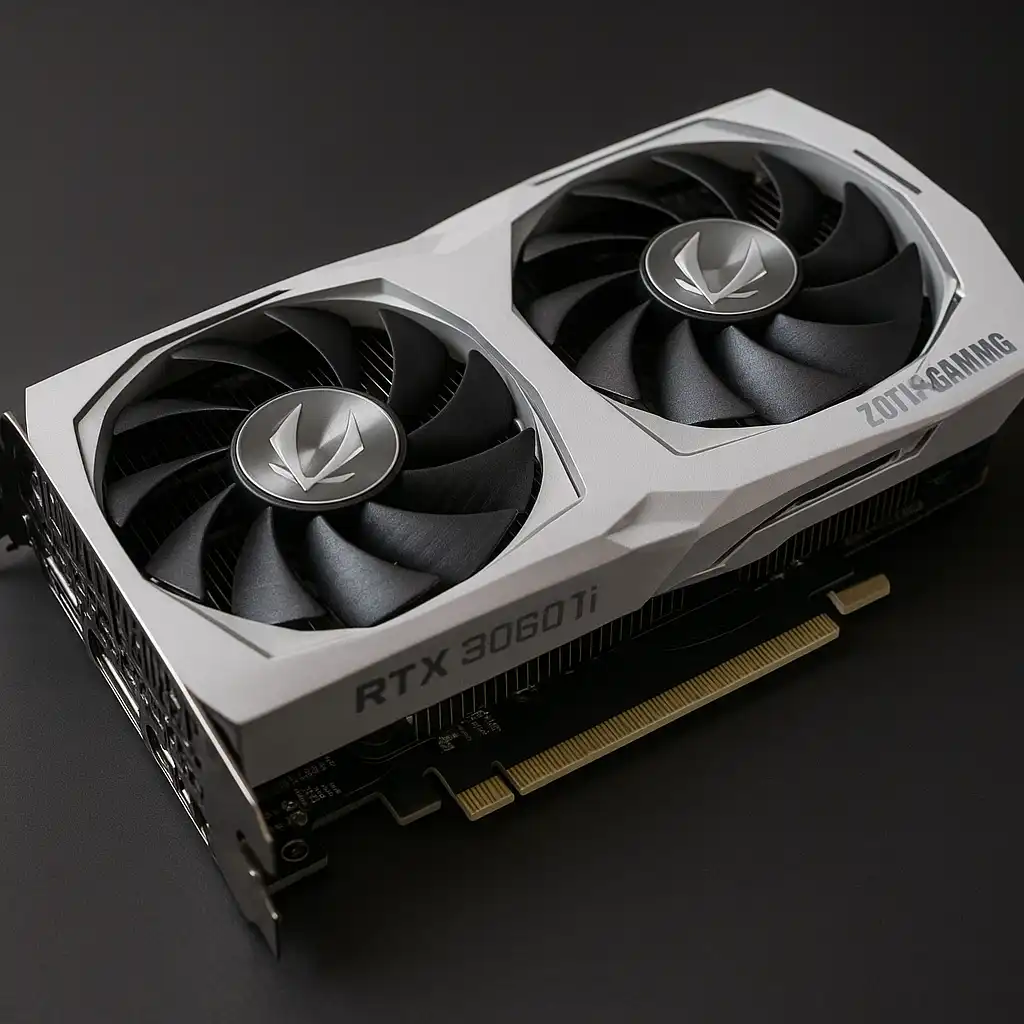How to Install an SSD in a Laptop (Beginner-Friendly Guide)
Disclosure: This post contains affiliate links. LaptopVoyager.com participates in the Amazon Associates Program and may earn commissions on qualifying purchases, at no extra cost to you.
Last Updated: November 2025
Upgrading your laptop with an SSD is one of the fastest ways to bring new life to your system. It cuts boot times, reduces freezing, and makes everyday tasks feel smoother. The good news: installing one is easier than most people expect, and you can do it at home with just a screwdriver.
👉 If you’re deciding which SSD to buy before installing one, take a look at the best laptop SSD upgrades for faster performance.
🔍 Why Installing an SSD Makes Such a Big Difference
HDDs slow down as they age because they rely on spinning parts. SSDs don’t have moving pieces—they use fast flash memory that gives you instant responsiveness. Even older laptops feel shockingly fresh after the upgrade.
Most laptops that are more than a few years old still run on HDDs, which is why this upgrade is such a dramatic improvement.
🔍 Step 1: Check the Type of SSD Your Laptop Supports
Before buying an SSD, make sure it fits your laptop. Most systems use one of these:
- 2.5-inch SATA SSD
- M.2 SATA SSD
- M.2 NVMe SSD
To confirm compatibility:
- Look up your laptop model + “SSD upgrade”
- Check the official support page
- Look for keywords like 2.5″ SATA, M.2 SATA, or M.2 NVMe
👉 If you’re unsure what drive you currently have, you can quickly confirm your internal storage type using our guide on how to check if your laptop has an SSD or HDD.
🔍 Step 2: Back Up Your Files
Before removing anything, back up your data:
- Use an external drive
- Save key files to cloud storage
- Or clone your current drive directly to the new SSD
Cloning is popular because it keeps everything exactly the same—Windows, apps, and files—just much faster afterward.
🔍 Step 3: Power Off the Laptop and Remove the Bottom Cover
- Shut down the laptop
- Unplug the charger
- Remove the screws on the bottom
- Gently lift off the cover
Touch a metal surface first to release static electricity before working inside.
🔍 Step 4: Remove the Existing Drive
For 2.5-inch SATA drives
- Locate the rectangular drive
- Remove the bracket screws
- Slide the drive out of the connector
For M.2 drives
- Find the slim, stick-shaped SSD
- Remove the single screw
- Let the drive pop up at an angle
- Slide it out gently
Nothing should require force. If it does, stop and double-check.
🔍 Step 5: Install the New SSD
For 2.5-inch SATA SSDs
- Secure the SSD into the bracket
- Slide it into the SATA connector
- Tighten the screws
For M.2 SSDs
- Insert the connector at an angle
- Push the drive down flat
- Tighten the retaining screw
NVMe drives may come with a small thermal pad—install it if included.
🔍 Step 6: Reassemble and Boot the Laptop
- Reattach the bottom cover
- Tighten all screws
- Turn the laptop back on
If you cloned your old drive, Windows should boot normally—just much quicker than before.
🔍 Step 7: Install Windows on the New SSD (If Needed)
If you didn’t clone:
- Create a Windows installer USB
- Plug it into the laptop
- Press F2, F12, or ESC during startup
- Choose the USB drive
- Install Windows onto the SSD
This process is usually fast because SSDs install Windows much quickly.
👉 Looking for more storage after installing your new drive? Here’s our roundup of the best 1TB SSD options for laptops.
📌 Key Takeaways
- Installing an SSD is one of the biggest speed upgrades you can make
- Always check whether your laptop supports SATA, M.2 SATA, or NVMe
- Cloning saves time and keeps your apps and settings intact
- The entire upgrade often takes under 20 minutes
- SSDs run cooler, quieter, and far faster than HDDs
🟢 FAQs
Q: Can I add an SSD without removing my old HDD?
Yes. Many laptops support both if they have a 2.5-inch bay and an M.2 slot.
Q: Does an SSD need extra cooling?
Not in normal use. NVMe drives run warm, but that’s expected and safe.
Q: Do I have to reinstall Windows?
Only if you choose not to clone the old drive.
Q: Could opening the laptop void my warranty?
It depends on the model. Some brands allow upgrades, while sealed designs may not.
✅ Conclusion
Installing an SSD is a simple, beginner-friendly upgrade that delivers instant results. With just a few steps, you can make your laptop faster, quieter, and far more responsive—often for less than the cost of a new machine.







